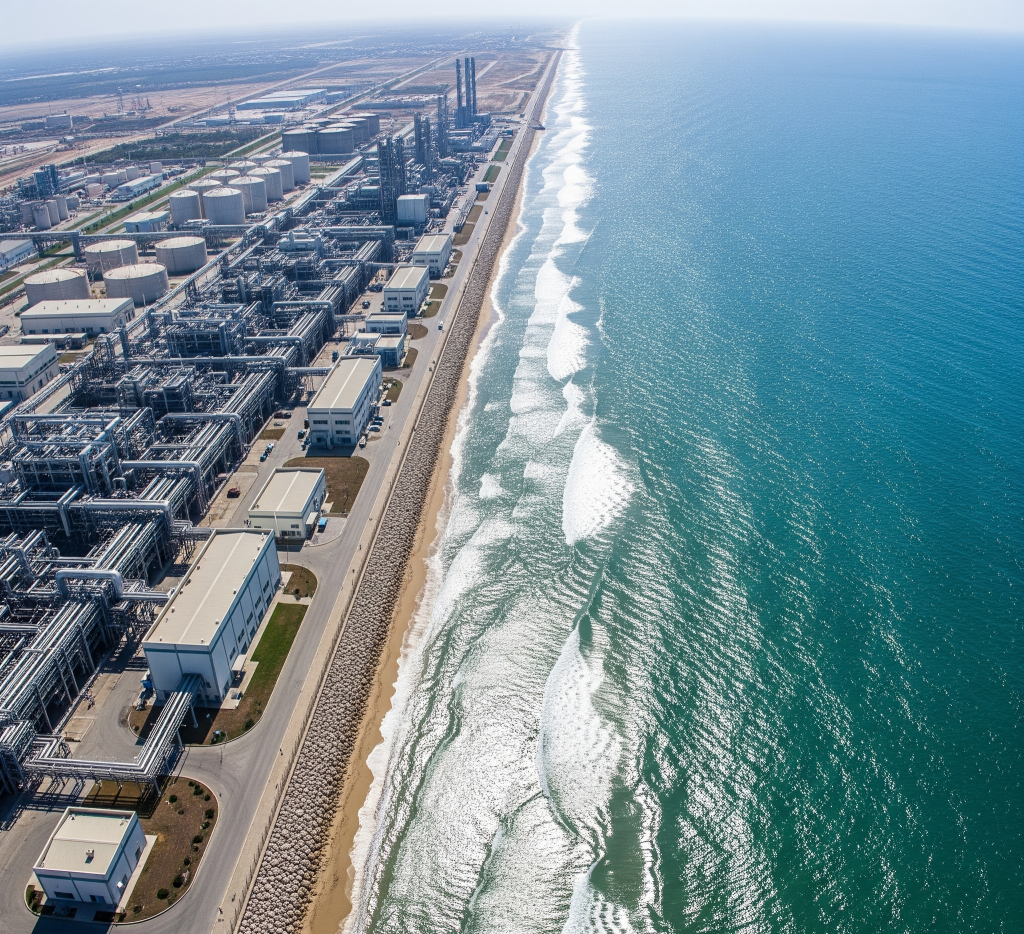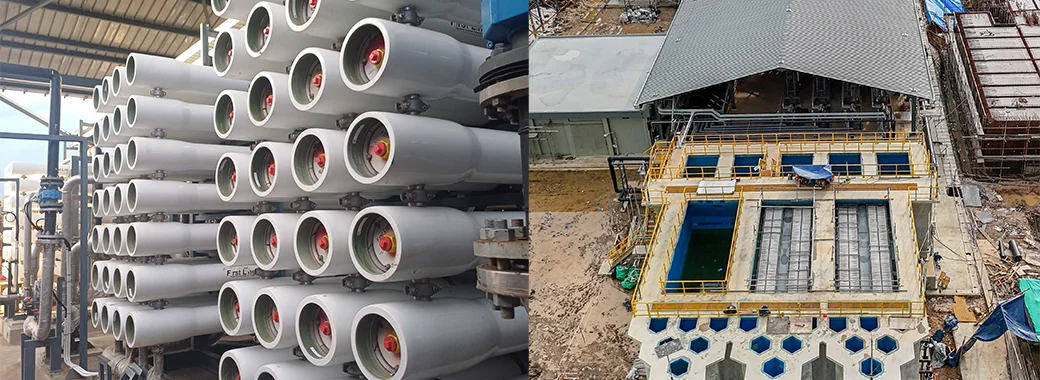Indonesia Water Desalination Solution: The Strategic Answer to Industrial Water Challenges
An abundance of water surrounds Indonesia, an archipelagic nation with the world’s second-longest coastline. Yet for many industrial companies, securing a consistent supply of high-quality freshwater remains a growing challenge. Fortunately, an Indonesia water desalination solution presents a powerful opportunity. This advanced water treatment technology transforms abundant seawater into a high-grade resource. Consequently, this article explores how a reliable Desalination system is no longer optional—it’s a strategic necessity for sustainable growth.
What Exactly Is Water Desalination?
At its core, water desalination is the process of removing dissolved salts and other minerals from a water source. The primary goal is to produce freshwater suitable for a specific end-use. For industry, this often means meeting purity standards far stricter than those for drinking water. Ultimately, the process effectively separates the incoming water source into two streams: purified freshwater (permeate) and a concentrated salt solution (brine).
How Does an Indonesia Water Desalination Solution Work?
While the concept is simple, the technology is highly sophisticated. Two main methods dominate the global desalination landscape. However, one is the clear leader for most modern industrial applications in Indonesia.
Reverse Osmosis (RO): The Industry Standard for Efficiency
Reverse Osmosis (RO) is the most prevalent and energy-efficient desalination technology used today. It is a pressure-driven, membrane-based filtration process that involves several key stages.
- First, Pre-treatment: Operators filter the raw source water to remove sand, silt, organic matter, and other suspended solids. These materials could otherwise clog or damage the delicate RO membranes.
- Next, High-Pressure Pumping: High-pressure pumps then pressurize the pre-treated water to several hundred pounds per square inch (PSI).
- Then, Membrane Separation: This immense pressure forces the water against a series of semi-permeable membranes. The microscopic pores in the RO membrane allow pure water molecules to pass through. In contrast, they reject the larger salt molecules, along with bacteria, viruses, and other impurities.
- Finally, Post-treatment: Technicians often stabilize the resulting freshwater to adjust its pH. They may also condition it for its specific industrial use.
Because of its efficiency, modularity, and falling cost, the RO system is the ideal Indonesia water desalination solution for new plants worldwide.
Thermal Desalination: A Time-Tested Alternative
Thermal desalination effectively mimics the Earth’s natural water cycle. The process involves heating seawater to produce water vapor, which leaves the salts behind. This steam is then cooled and condensed, resulting in very high-purity distilled water. While generally more energy-intensive than Reverse Osmosis, this method can be economically viable. For example, it works well when a facility, like a power plant, has access to a significant source of waste heat.
Critical Applications for Water Desalination in Indonesian Industry
The ability to create a custom-engineered water supply on-site is a game-changer for a diverse range of sectors in Indonesia.
Powering the Paper Industry with High-Purity Water
The pulp and paper industry uses a large volume of water where quality directly impacts the final product. Specifically, minerals and contaminants in source water can affect paper brightness, strength, and chemical reactions. Therefore, desalination provides a consistent supply of high-purity process water. This improves product quality and reduces reliance on variable river or lake sources.
Securing Operations in Oil and Gas
For offshore platforms and coastal refineries, a dependable source of freshwater is non-negotiable. Desalination systems provide critical water for drilling processes, utility functions, and equipment cleaning. Of course, they also supply potable water for the crew. This operational independence is vital in remote and demanding environments.
Protecting Boiler and Cooling Water Systems
Power generation plants and heavy manufacturing facilities depend on boilers and cooling towers. Using water with high mineral content leads to scaling, corrosion, and biofouling. In turn, this can cause catastrophic equipment failure, reduce thermal efficiency, and lead to costly downtime. Water desalination provides high-quality makeup water, thereby protecting critical assets and optimizing the performance of the entire cooling water system.
Advancing Wastewater Treatment and Reuse
Desalination technology, particularly Reverse Osmosis, plays a pivotal role in advanced wastewater treatment. For instance, it can serve as a tertiary treatment step to “polish” treated industrial effluent by removing residual salts and contaminants. This process produces water clean enough for reuse in industrial processes. As a result, it creates a closed-loop system that drastically reduces freshwater intake and minimizes environmental discharge.
Answering Top Questions About Water Desalination in Indonesia
As this technology becomes more critical, several key questions consistently arise among Indonesian decision-makers.
Is Water Desalination Too Expensive for Industrial Use?
This is perhaps the most common misconception. While a desalination plant represents a significant capital investment, its operational cost has plummeted over the last two decades. This dramatic cost reduction is due to several factors:
- More efficient RO membranes now require less energy per cubic meter of water produced.
- Energy Recovery Devices (ERDs) capture hydraulic energy from the high-pressure brine stream. They then transfer it back to the feed stream, cutting energy consumption by up to 60%.
- Advanced automation reduces labor costs and optimizes plant performance.
When compared to the long-term costs of water trucking or production losses from water shortages, desalination often presents the most economically sound solution.
What Is the Environmental Impact of Desalination?

The primary environmental impact concerns are brine disposal and energy consumption. However, modern environmental engineering has effective solutions for both. The brine is not toxic, but its high salinity must be managed. For this reason, modern desalination plants use advanced diffuser systems that rapidly mix the brine with surrounding seawater. This ensures salinity returns to normal levels within a very short distance of the discharge point. On the energy front, innovations have drastically lowered consumption. Furthermore, there is a strong global trend toward powering desalination plants with renewable energy, which further reduces their carbon footprint.
Is Desalination a Proven Solution in Indonesia?
Absolutely. While large-scale industrial adoption is growing, an Indonesia water desalination solution is already a proven success in the public water supply sector. The SWRO (Seawater Reverse Osmosis) plants built for the Kepulauan Seribu (Thousand Islands) are a prime example. These facilities successfully provide a reliable and safe water source to communities that previously struggled with limited groundwater, demonstrating the technology’s effectiveness in the Indonesian context.
The Future of Water Treatment: Why Desalination is a Sustainable Choice
The trajectory for desalination is one of continuous improvement. For example, ongoing research is yielding RO membranes that are more productive and resistant to fouling. As costs continue to fall and efficiency rises, the integration of desalination with renewable energy sources like solar will make it the cornerstone of water sustainability. Ultimately, this allows for Indonesia’s industrial future and economic development to proceed without over-extracting the nation’s precious freshwater resources.
Finding the Right Indonesia Water Desalination Solution Partner
Implementing a desalination solution requires expertise. The process involves analyzing source water and determining the precise purity requirements for your application. Moreover, it includes engineering a system that is both reliable and cost-effective. Partnering with a specialist in water treatment equipment is therefore crucial. The right partner can design and deliver the perfect Indonesia water desalination solution—from a compact system for an offshore rig to a large-scale plant for a paper mill—ensuring your industry has the water it needs to thrive.
Follow us on Social Media
